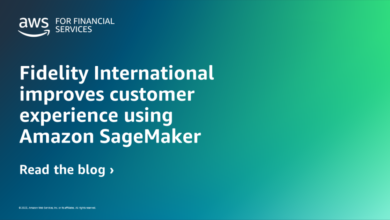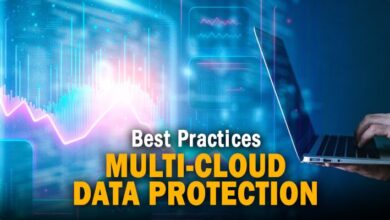Cloud Repatriation: The Need for a Hybrid Approach

Kiran Ghodgaonkar, director of product marketing at Netscaler, uncovers the complexities of cloud repatriation. Explore the advantages of a hybrid approach, striking a balance between security and scalability.
After spending over a decade moving all applications and data to the cloud, some businesses are disappointed with the results. IT leaders are discovering that the benefits they expected with their initial migration to the cloud, including flexibility, cost efficiency, and control over digital assets, are less pronounced than anticipated. With rising cybersecurity threats and a greater interest in artificial intelligence, leaders are now prioritizing an ability to leverage, protect, and share internal data across many business functions.
To take greater control of their cloud environment, some businesses are considering cloud repatriation, which involves a reverse migration from public cloud services to on-premise data centers and more private solutions. But, despite the enticing reasons for repatriation, IT leaders must realize that this solution is a manageable reversion to an on-prem solution. Instead, they can choose a hybrid approach to leverage on-prem and public cloud services. As IT leaders examine their enterprises’ data and applications needs, they’ll likely realize that a hybrid approach is the best choice for meeting their business needs.
The Reasons for Repatriation
Cloud computing has transformed how businesses operate, offering unparalleled flexibility and scalability. The benefits of the cloud have led to a surge in its adoption across industries. However, increasing cloud costs are a growing reason for CIOs and IT executives to reconsider their company’s cloud architecture and consider cloud repatriation.
As remote and hybrid work has increased, many companies have been required to support new working methods. However, as more data and applications are added to a cloud environment, there are corresponding cost increases for both storage and usage.
Businesses may also consider cloud repatriation if they need more visibility into cloud infrastructures. Moving to the cloud can mean giving up control of data applications’ infrastructure. As cloud environments continue to grow, this loss of visibility can make it more challenging to identify vulnerabilities and respond to potential threats — a particular concern in an era when cybersecurity is especially top of mind.
Lastly, enterprises may lean toward cloud repatriation since monitoring and management tools that work on-premises may not work in the cloud. In cloud technology, monitoring and managing IT systems can become increasingly complex. This is where the disconnect between on-premise and cloud-based monitoring and management tools can become evident. For example, an inability to monitor cloud environments decreases the chances for IT leaders to spot application performance problems or ensure that their infrastructure aligns with regulatory requirements. With these factors in mind, IT executives still need to examine the potential associated friction points of their cloud platforms.
Cloud Repatriation Can Be Complicated
While there are draws toward shifting to a hybrid approach, moving data and applications from one location to another requires a careful strategy, especially if the move involves sensitive data. IT leaders must first consider the cost of transferring data and how much their on-prem or private cloud options can handle. Leaders must also ensure this transfer happens securely to avoid any data leaks.
During this transition to a hybrid model, IT personnel should consider the application architecture of their IT infrastructure. Specific applications –– like cloud-native applications designed for a particular cloud architecture –– can’t be simply moved to an on-prem solution. Another consideration is the user experience for employees and customers working in a remote or hybrid environment. No matter where these users are, they deserve an optimal user experience with minimal interruptions. In this way, moving applications and data back on-premises could potentially create latency problems impacting user experience.
Even if the repatriation process is a success, IT executives must consider the cost of maintaining an on-prem solution and account for the computing capabilities necessary to keep their enterprise operational. They may even need to hire additional personnel to maintain on-prem infrastructure and to implement new processes.
For these reasons, IT leaders should look for a balance that addresses their intentions toward cloud repatriation without succumbing to the pitfalls that repatriation can present. The ideal solution is a hybrid approach that can help optimize cloud operations while minimizing dependence on any one type of infrastructure.
See More: Solving SIEM Challenges in Cloud Security
The Balance in a Hybrid Cloud Approach
As enterprises decide the future of their cloud architecture, they’ll find a hybrid, multi-cloud approach is the best option. The key to successfully transitioning to a hybrid model will be to decide which applications and data to move and which assets are better served in a public cloud environment. Certain organizations may decide that more sensitive data or applications governed by stricter regulations are safer within an on-premise environment. Alternatively, decision-makers may decide that customer-facing applications are better delivered in a public cloud environment. This approach aims to strike a beneficial balance between the security and control of on-prem infrastructures and the flexibility and scalability of cloud environments.
IT managers should do a deep dive into their infrastructure to determine the best environment for each asset, how they plan to move that asset, and how best to manage those assets once they’ve been moved. When moving applications and data, it helps to have a solution that can securely deliver those applications and preserve data as they move from the public cloud to an on-prem solution.
After transferring those assets, IT managers should continue monitoring applications to ensure they operate effectively in their new environment. Administrators can maximize their investment in a hybrid approach by ensuring that applications and their corresponding data stay operational and secure as those assets move.
Leaning Into a Balanced Approach
Dependence on public cloud services will only grow. Gartner even projected that 65% of application workloads will be optimized for cloud delivery in 2027, up from 45% in 2022. But, even with this greater dependence on the public cloud to deliver certain applications, many IT leaders may still need to leverage the benefits of an on-prem solution.
While many business leaders were eager to move all applications and data to the cloud, this model may not be the most advantageous regarding security, user experience, and flexibility. Ultimately, by leveraging a hybrid approach, organizations can harness the potential of cloud technologies while effectively managing some of the complexities they introduce. While interest in cloud services continues to grow, a strategic hybrid model can help businesses remain secure and adaptable to their workforce’s needs and evolving goals.
What’s your experience with cloud migration? How has the hybrid cloud approach impacted your enterprise’s IT strategy? Let us know on Facebook, X, and LinkedIn. We’d love to hear from you!
Image Source: Shutterstock



